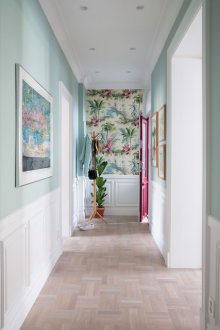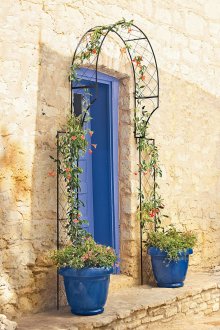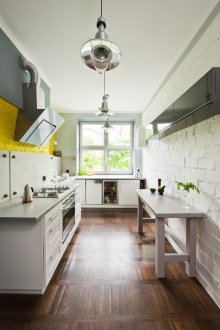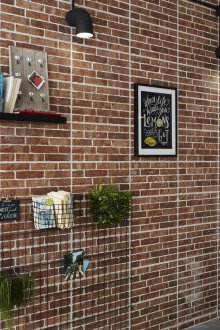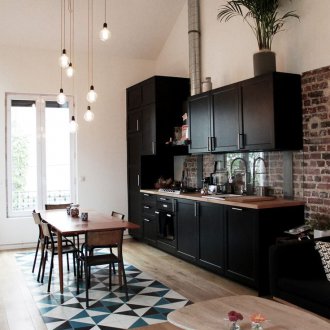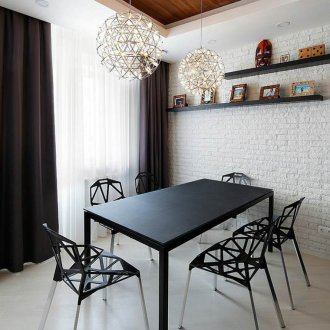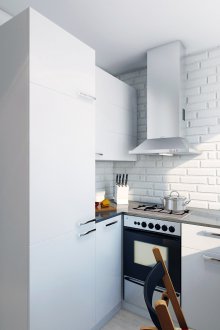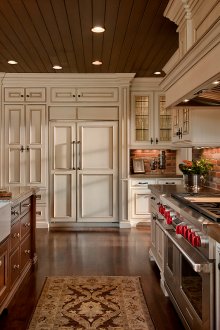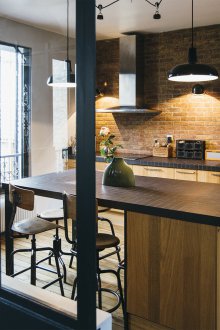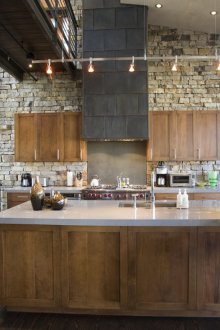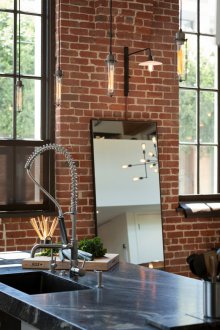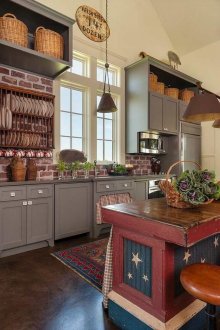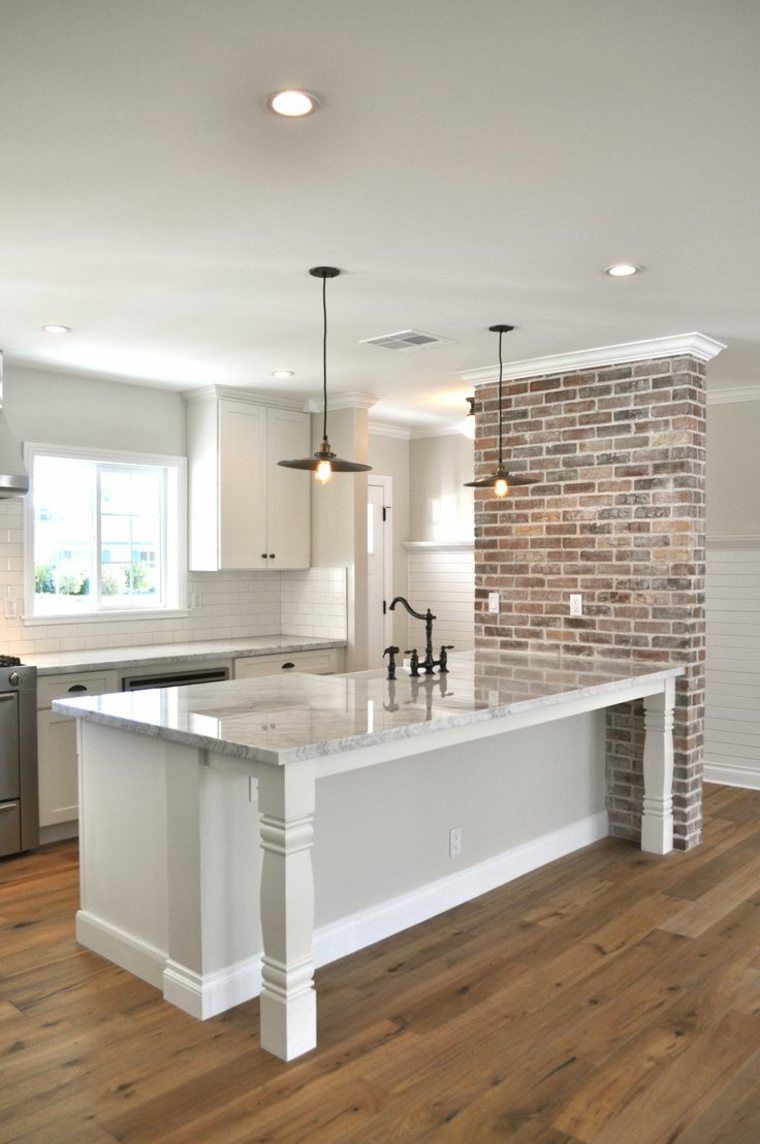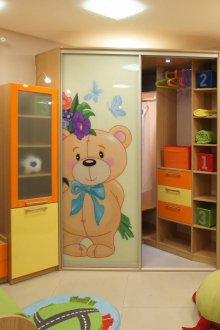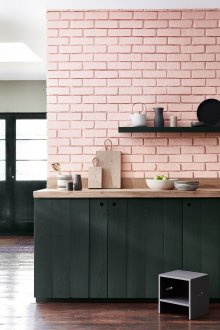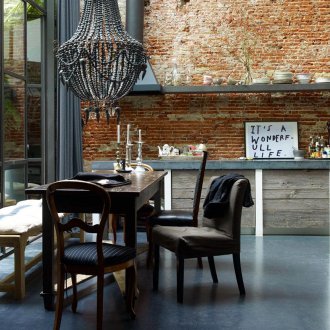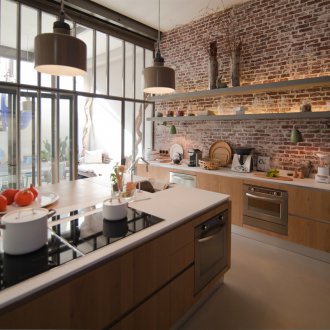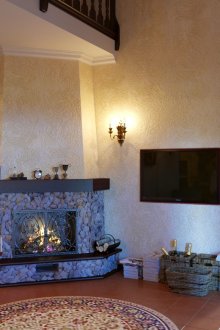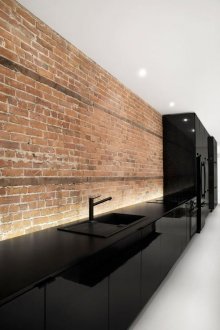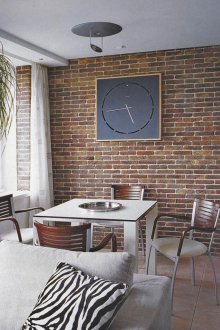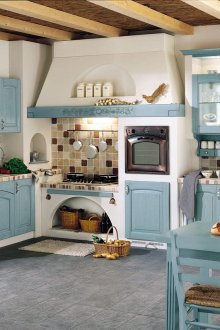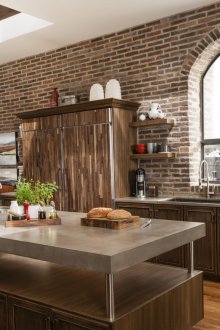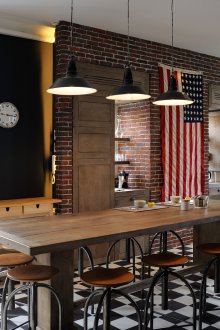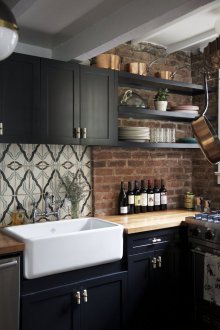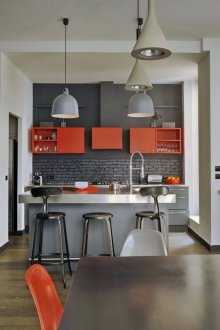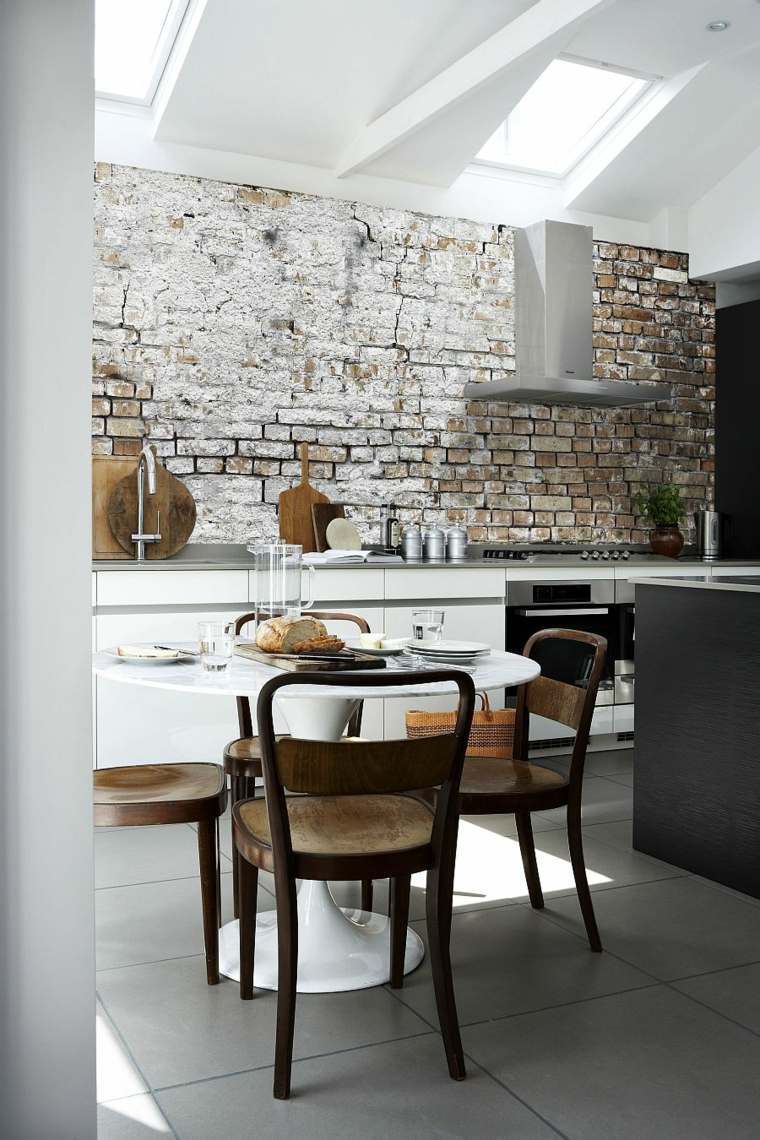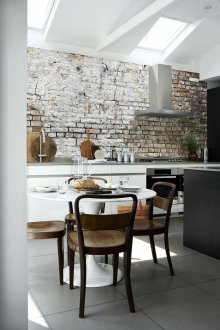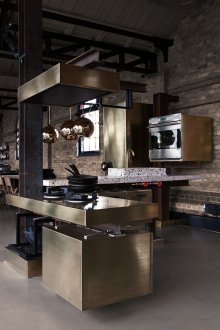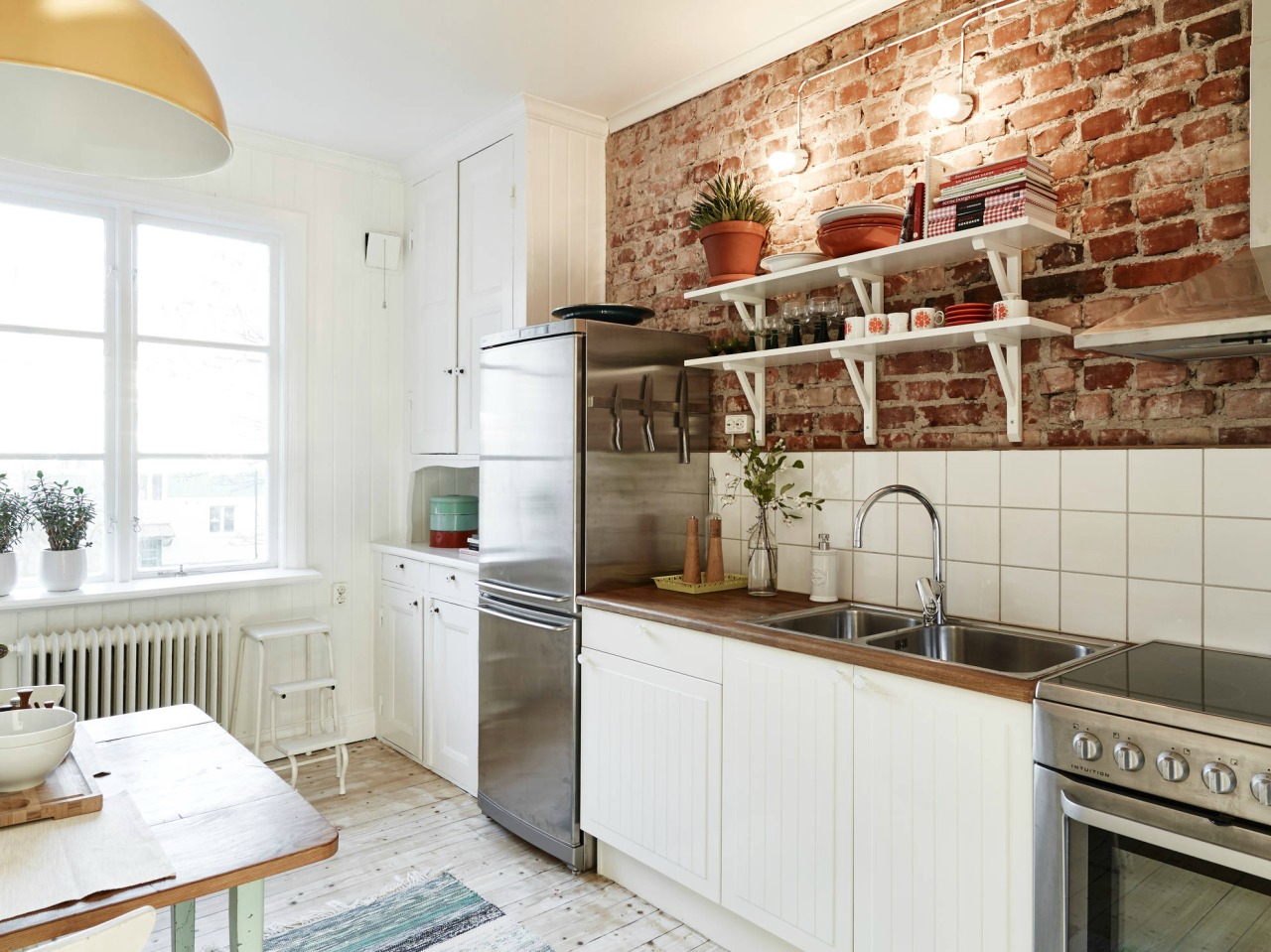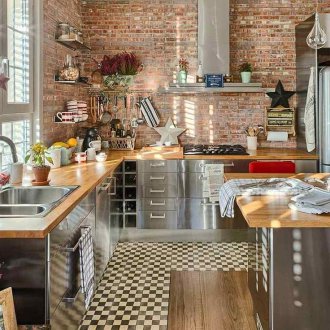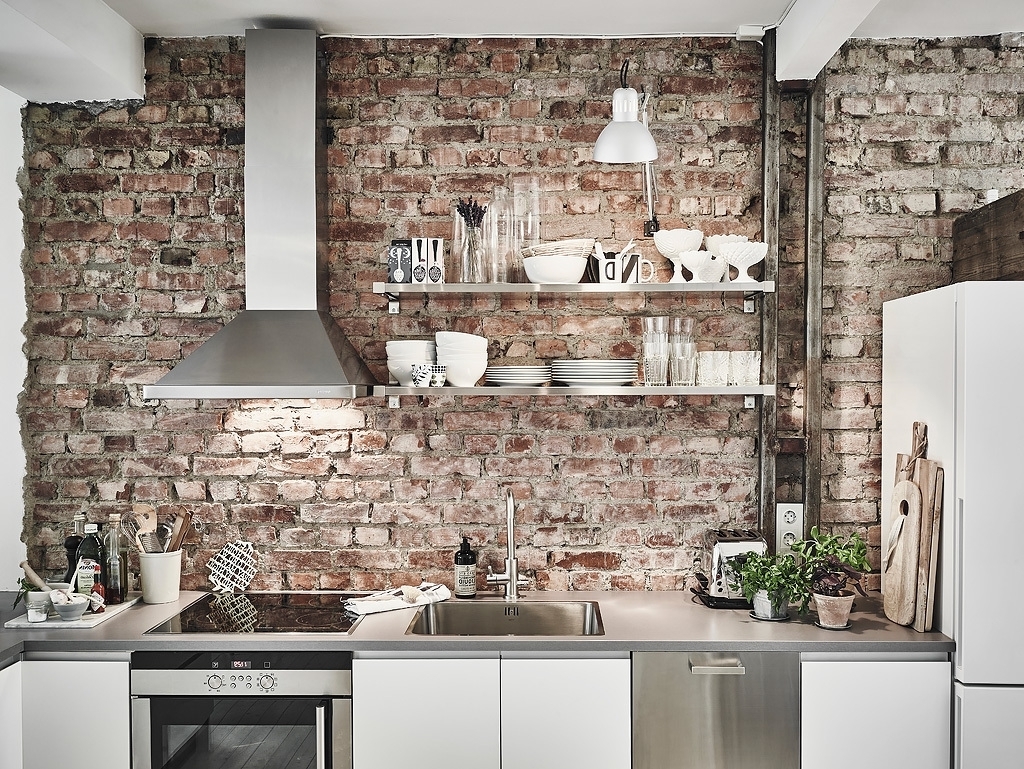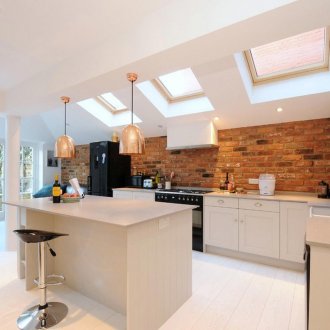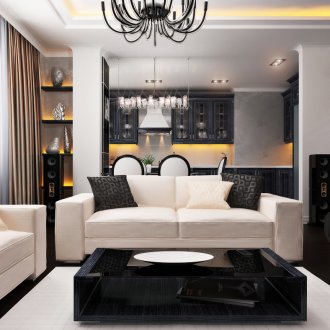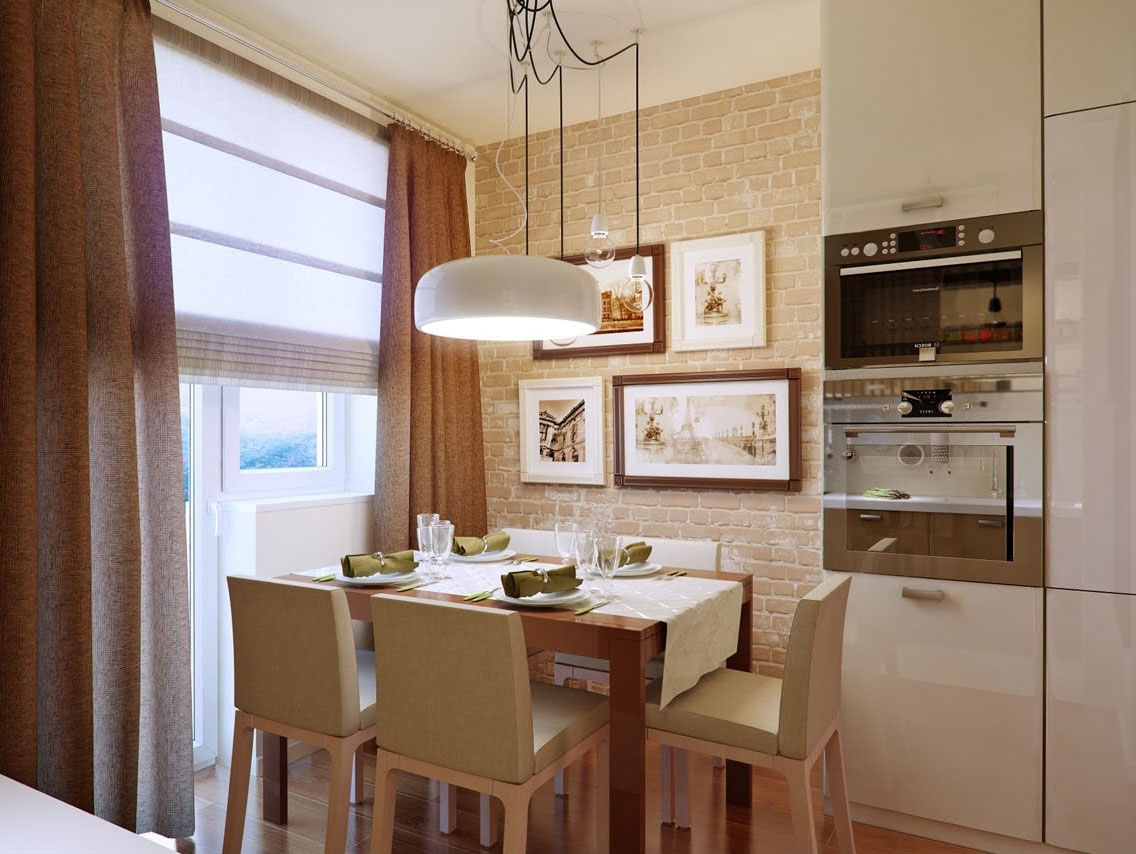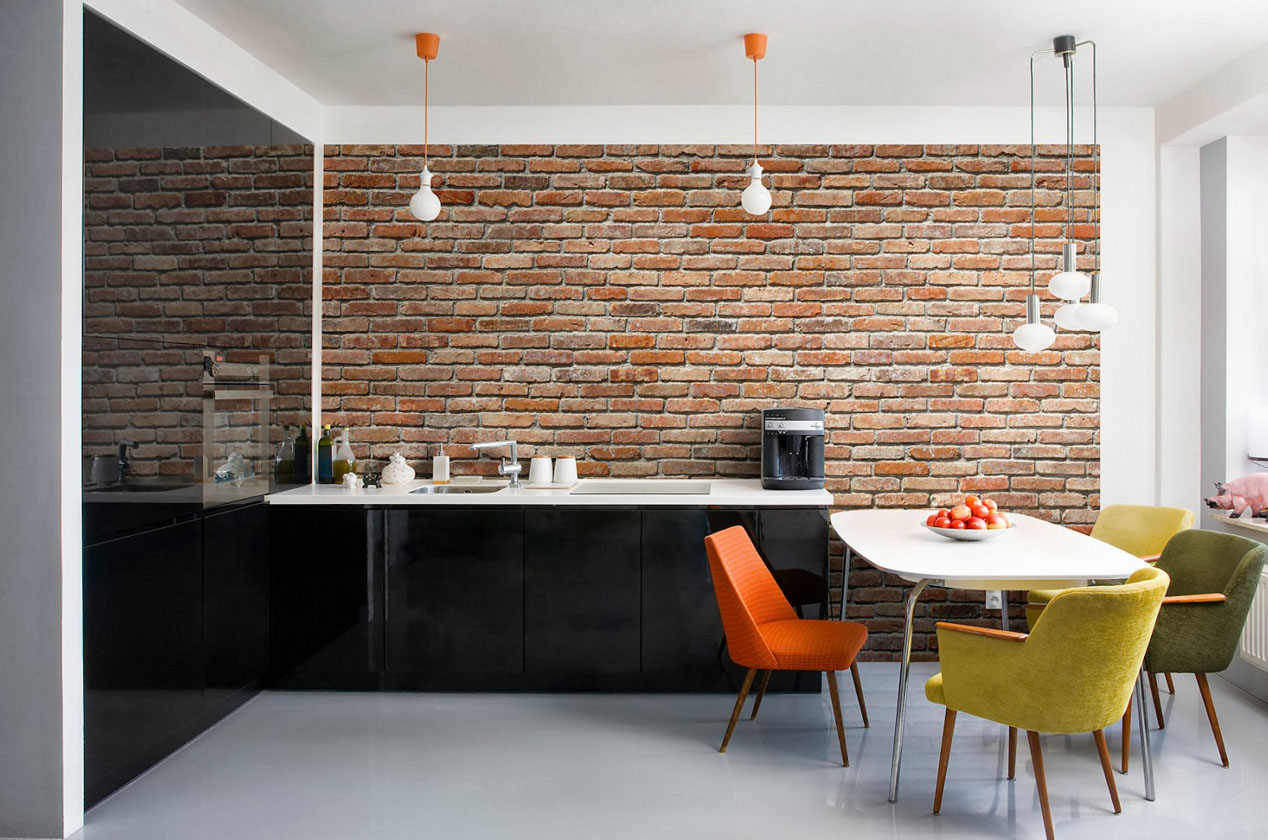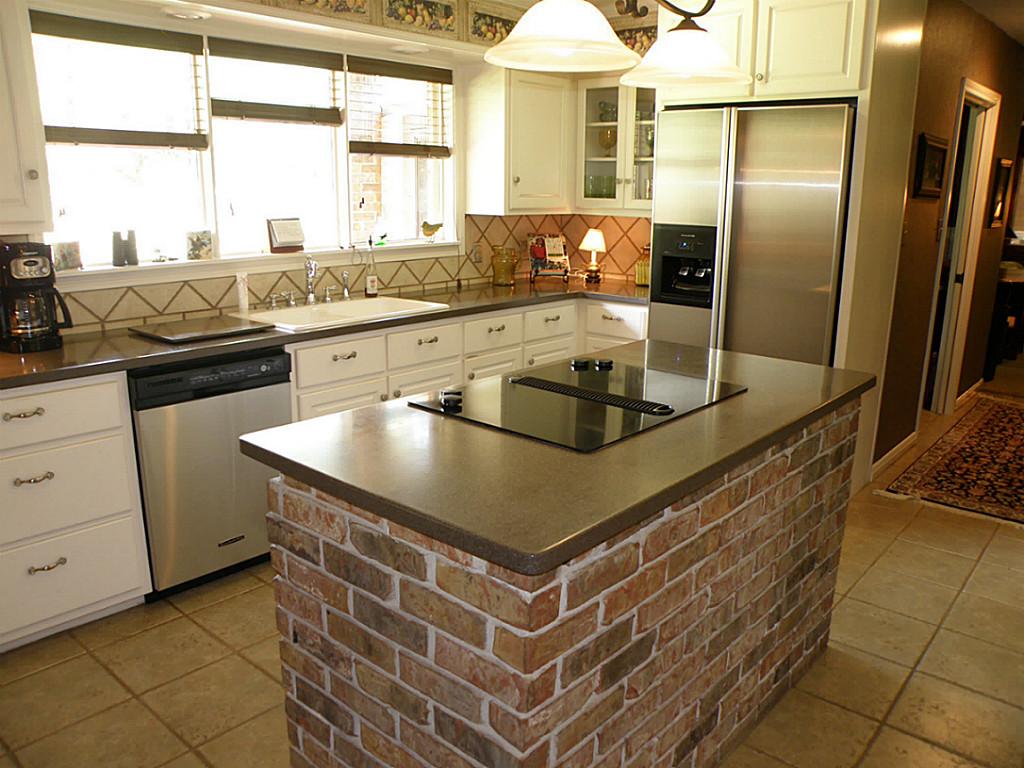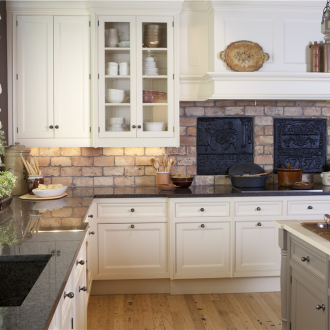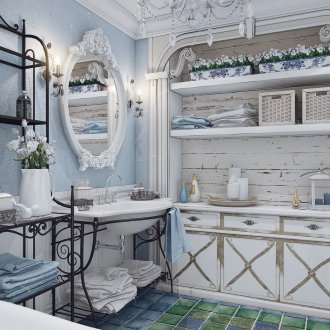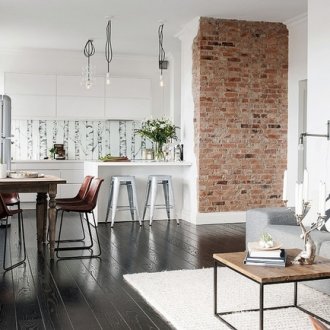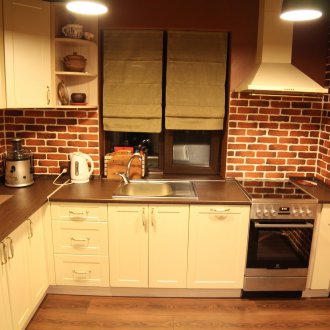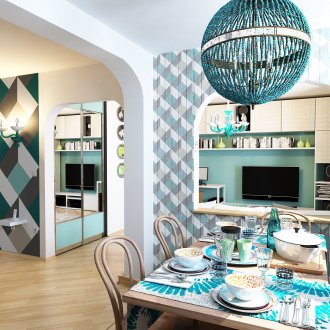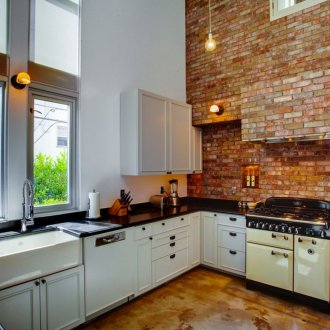Brick kitchen - rude charm and natural texture (53 photos)
Content
Industrial styles that became popular at the beginning of the last century brought their rules and ideas to the design of the premises. What used to be considered exclusively the property of factory interiors appeared in ordinary apartments and houses: heavy beams, metal lamps and brick walls. However, these tendencies existed long before the industrial revolution; rustic styles were also characterized by internal walls made of unprocessed materials and other rough surfaces. Provence, country and ethno along with the loft boast rough textures, especially in the kitchen space.
Types of decorative materials and their location in the interior
Thanks to modern materials and an abundance of information, almost any fantasy flight can be embodied in the interior. Brick kitchen? You are welcome! It is not difficult, the main thing is to decide what material to use in the design. Can choose:
- natural terracotta brick;
- silicate gray (so-called white) brick;
- finishing brick;
- decorative plaster;
- wall panel;
- white brick tiles;
- textured wallpaper.
Brick kitchen decoration is no longer at the peak of popularity, but it is not losing ground. This technique is out of fashion, it has a certain rude charm and appeal. In the kitchen, in the decoration of which brick was used, in one form or another, it is pleasant to be, because an atmosphere of sincerity and the illusion of simplicity are created. In fact, the use of these textures requires a competent approach, so that a cozy world does not turn into a fishing hut or a dilapidated shed. Here it is necessary to observe the measure, to understand how much is appropriate and with what it is better to combine decorative brick in the interior of the kitchen.
The additional cladding of the internal walls adds strength to the home and helps maintain heat. But, like any additional layer, it reduces the area of the room. This should be considered when choosing a material.
Sometimes it is more appropriate to prefer imitation, using decorative brick in the interior of the kitchen. Now the trend is its location on only one wall, which thus stands out against the general background and becomes the dominant accent. It can be a free surface or an apron for a kitchen under a brick, a wall or a specially constructed partition. Other background surfaces are neutral, pastel colors are most commonly used. Otherwise, the space may be overloaded, which is fraught with an unpleasant heavy atmosphere.
The brick wall in the design of any room is a fairly active element, especially when the masonry is bright terracotta. If gray or yellow material is used in combination with the neutral tones of the remaining vast surfaces (floor, ceiling, walls), the interior becomes more light. The combination of masonry with pastel colors visually facilitates the space. As an addition, it is logical to use bright textile accents or contrasting furniture. A brick kitchen implies the presence of many furnishings and household appliances, this should also be taken into account when planning decorative surfaces.
Color combinations and preferences
A huge plus of the brick texture is its ability to harmonize with almost any color scheme of other surfaces.Only combinations in which red and reddish shades overlap are undesirable. The best option is an apron for the kitchen under a brick or one of the walls, but even they need good lighting.
If you decorate all horizontal surfaces with masonry, you get a kind of castle walls, but this can be avoided by using whitewashing or white brick in the interior. Provence, country and Scandinavian style allow such a design solution, including wallpaper under a brick in the kitchen. The room is textured, interesting and filled with light.
Brick rustic styles look good both in country houses and in ordinary apartments. They seem to return to the past, where everything is filled with comfort, warmth and smell of fresh bread.
It should be noted that colorful carpets, contrasting curtains with bright patterns, and photo wallpaper are contraindicated for this dominant element of the interior. The interior of the brick kitchen is self-sufficient and does not tolerate competition. It attracts the main attention, and everything else serves as a complement. Theoretically, you can maintain a balance and combine the above textures with brick wall decoration, but this is a very difficult task, which only a real professional can do. Therefore, it is better to limit yourself to one active element, which may be:
- terracotta;
- yellowish sand;
- in red;
- gray
- white
- in black.
Color is determined either by the natural properties of the material, or by the selection of paint, which covers the brick wall. No matter what is used in the work: decorative brick, natural, imitation tile or textured wallpaper, the rules are the same for everyone.
A little bit about styles
For the design of a kitchen with a brick, several styles are acceptable:
- Loft;
- Industrial
- Gothic;
- Provence
- Country
- Scandinavian.
Each of them carries its own charm. Brutal industrial styles are suitable for lovers of strong aesthetic sensations and combine heavy concrete surfaces, decor elements made of metal and dark wood. In this case, you can make brickwork the entire surface of the walls and it will look organic. Dark colors help create a special bohemian atmosphere in the loft style.
Fans of light interiors should prefer unfading provence. Very light furniture and light fabrics, brick-like wallpaper in the interior, painted in soft or neutral colors, fill the atmosphere with air and visually increase the internal volume of the room. The piers decorated with white brick are appropriate. Among all village styles, Provence is the most sophisticated and refined, because it was formed in France, where even rural simplicity has a special charm.
Separately, it is worth considering the Gothic style. Although it is rarely used in the design of the kitchen space, you can use this option if you wish and have a competent approach. Authentic and original at the same time - this will look like a brick in the interior. It is exclusively suitable for thematic decoration and does not tolerate mixing with other styles.
Citing the Middle Ages, the atmosphere of knightly tournaments and gloomy castle walls, it will be appropriate to decorate the arches, which are very popular now, with brickwork, separate sections of walls, columns and other isolated elements, use kitchen panels that repeat brickwork, or artificial brick. Harmoniously complement the Gothic style with metal forged objects and lamps in a medieval style.
The rough and rough texture of the brickwork decorates the interior of the kitchen, complements it and gives it a special fullness. Small fragments of walls, a kitchen apron, even countertops and cabinet facades - any of the surfaces can be decorated with imitation of masonry, creating your own unique interior in which it will be nice to be.
